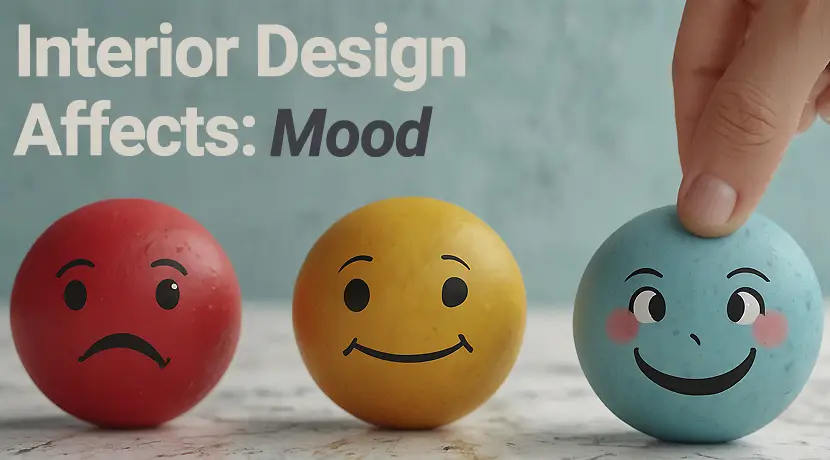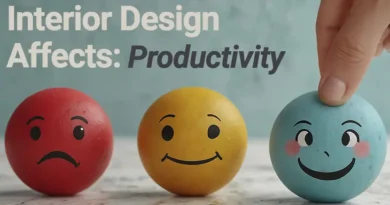How Does Interior Design Affect Mood
Unveiling the Impact of Interior Design on Our Moods
Have you ever walked into a room and immediately felt a wave of calm wash over you, or perhaps entered a space that seemed to energize you from the get-go? It’s fascinating how our surroundings can profoundly affect our emotions and overall mood. This phenomenon is at the heart of understanding how interior design affects mood, a topic that blends the art of aesthetic appeal with the science of psychological impact.

The Science of Color and Emotional Well-being
The Psychology of Color in Spaces
Delving into the psychology of color reveals its potent influence on human emotion and behavior. Colors like blue and green, often found in nature, are associated with tranquility and relaxation, scientifically supported by their ability to lower heart rate and reduce anxiety. Contrastingly, vibrant hues like red and orange are known to stimulate energy and excitement, making them ideal for spaces intended to foster social interaction and creativity.
The Impact of Natural Light on Mood
Natural light plays a pivotal role in enhancing our mood and overall health. Exposure to sunlight increases the brain’s release of serotonin, a hormone associated with boosting mood and helping a person feel calm and focused. Incorporating elements like large windows and skylights in interior design not only optimizes natural light intake but also helps regulate our circadian rhythms, improving sleep quality and vitality.
The Role of Space and Layout in Emotional Dynamics
Creating Harmony with Proportional Design
The principles of proportion and scale in interior design are crucial for creating a harmonious and comfortable space. A well-proportioned room, adhering to guidelines like the Golden Ratio, provides a sense of order and balance, contributing to a feeling of well-being. Misproportioned spaces, on the other hand, can lead to discomfort and a sense of unease, highlighting the importance of thoughtful spatial planning.
Enhancing Mood through Functional Layouts
Functional layouts are about more than just aesthetics; they’re about creating environments that are conducive to our daily activities and well-being. For instance, open-plan layouts can foster a sense of connection and community within a home, while thoughtfully designated quiet areas can provide a sanctuary for relaxation and introspection. Tailoring spaces to meet these psychological needs is a key aspect of how interior design influences mood.
Material Selection and Sensory Experience
The Tactile Influence of Textures
Textures add a tactile dimension to the visual appeal of a space, influencing mood through physical interaction. Soft, plush fabrics invite relaxation and comfort, creating a cozy atmosphere that encourages unwinding. Conversely, sleek, smooth materials can convey a more formal and clean aesthetic, ideal for spaces designed for focus and productivity.
Integrating Biophilic Elements for Emotional Balance
Biophilia, the innate human inclination to connect with nature, has profound implications for interior design. Incorporating natural elements like wood, stone, and plants can reduce stress, enhance creativity, and improve air quality, making biophilic design a powerful tool for positively influencing mood within a space.
As we’ve explored, the question of how interior design affects mood encompasses a myriad of factors, from color and light to layout and materials. By understanding and applying these principles, we can create spaces that not only look beautiful but also actively contribute to our emotional and psychological well-being.

FAQs on the Impact of Interior Design on Mood
What role does color play in interior design and mood? Color significantly influences mood and emotional responses in interior design. Different colors can evoke various feelings; for example, blue can induce calmness, while red may energize. The choice of color in a space can therefore significantly impact the occupants’ emotional state.
How does natural light in a space affect mood? Natural light boosts mood by increasing the brain’s release of serotonin, a mood-enhancing hormone. It also helps regulate our natural sleep-wake cycle, leading to better sleep and overall well-being. Design features that maximize natural light can make spaces feel more inviting and invigorating.
Can the layout of a room really influence how I feel? Absolutely. The layout of a room affects functionality, flow, and the overall feel of the space. Open layouts can foster a sense of freedom and connection, while well-defined zones can create a sense of order and purpose, each influencing mood in different ways.
What impact do textures have on the mood of an interior space? Textures can dramatically affect the mood of a space through their tactile qualities. Soft, warm textures can make a space feel cozy and inviting, encouraging relaxation, while smooth, hard textures can lend a space a more formal, orderly vibe.
Why is incorporating elements of nature important in interior design? Incorporating natural elements, a concept known as biophilic design, is crucial because it taps into our innate connection to nature, which can reduce stress, improve cognitive function, and enhance mood. Elements like plants, natural light, and natural materials can make indoor spaces healthier and more emotionally balanced.





